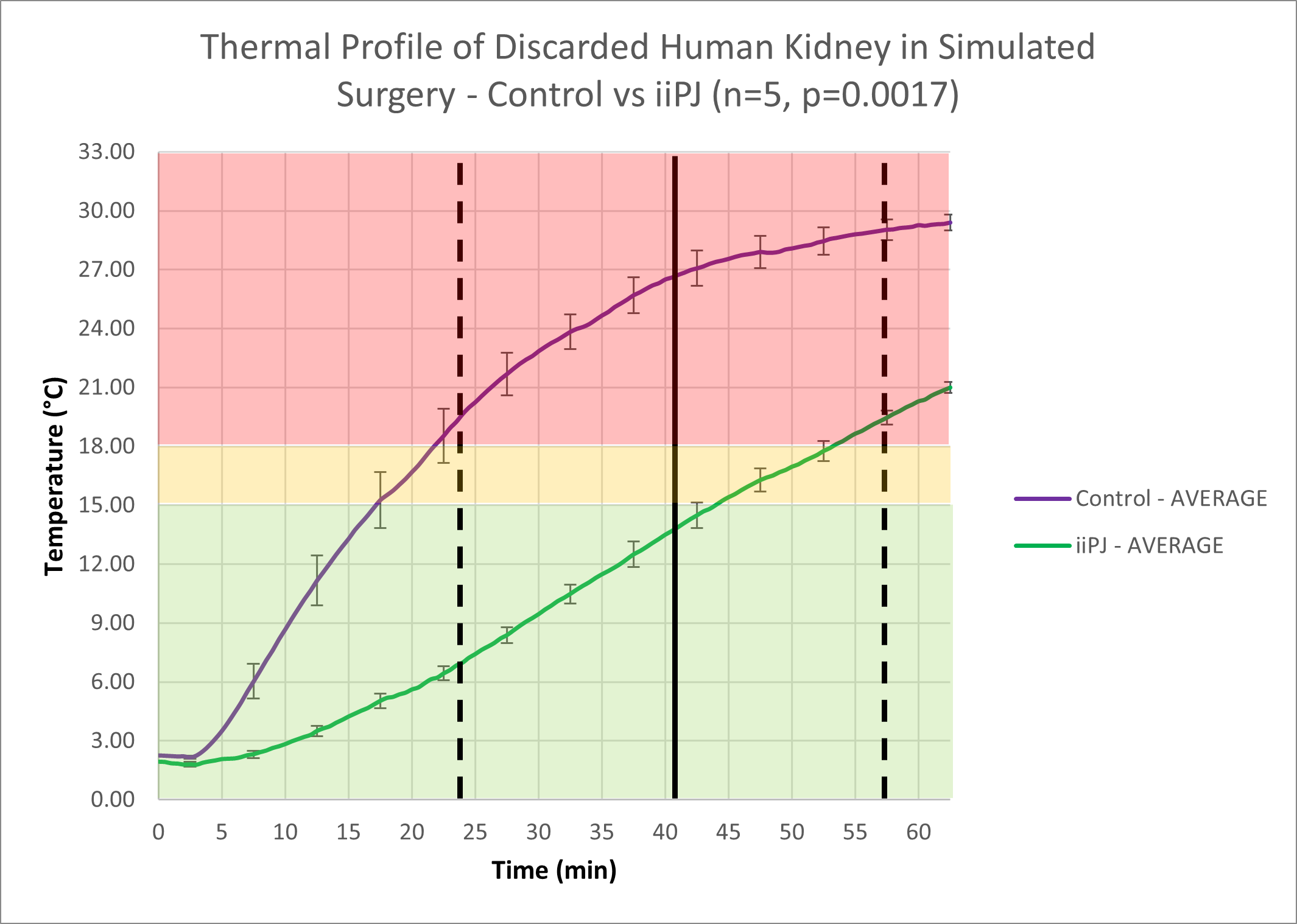Protection from the second warm ischemic injury in kidney transplantation using an ex vivo non-utilised human kidney model and thermally insulating jacket
Turaab Khan1,2, Peter Yoon2, Ahmer Hameed2, Jeremy Kwarcinski2, Tony Pang1,2, Henry Pleass1,2.
1Westmead Clinical School, The University of Sydney, Sydney, Australia; 2Department of Surgery, Westmead Hospital, Sydney, Australia
Introduction: Kidney transplantation is the optimal treatment for suitable patients with end-stage renal disease. The duration of surgical vascular anastomosis time, also known as second warm ischaemic time (SWIT) has now been identified as impacting both delayed graft function as well as long term graft survival in kidney transplantation, with temperatures above 15-18°C regarded as the threshold for ischaemic injury. There is currently no commercially available method of overcoming the SWIT period through intraoperative thermal insulation. This study aims to analyse the effect of a novel biomedically engineered thermally insulating jacket, the ischemic injury protective jacket (iiPJ) as a solution to overcoming this second warm ischemia. The iiPJ has been previously validated with porcine kidney and this study aims to test whether the iiPJ is able to thermally insulate non-utilised human donor kidneys in an ex vivo transplant model.
Methods: An ex vivo transplantation model using a water bath regulated at 37°C to replicate average human body temperature was utilised for this study. Non-utilised kidneys were obtained and tested with and without the insulation of the iiPJ to measure the average core temperature of a kidney at 30-second intervals for 60 minutes on a temperature-time graph.
Results: The control kidney core temperature reaches the 15°C threshold temperature at 17.3±1.8 minutes and the 18°C threshold at 20.9±2.0 minutes. This time to reach the warm ischemia threshold temperature is below the average global surgical time of 40.5±17.5 minutes. The iiPJ protected kidney reaches the 15°C threshold temperature at 44.5±1.9 minutes and remains within the 18°C threshold till 53.3±1.3 minutes. This amounts to an additional thermal protection of 27.2±3.7 minutes (n=5, p=0.0017) for the iiPJ protected kidneys when compared to the current surgical practices represented by the control kidneys.
Implication and Conclusion: The iiPJ is significantly effective in reducing the thermal profile of the kidney, increasing the time available for transplantation, and minimising the time pressure on surgeons in order to reduce the occurrence of surgical complications. The iiPJ is a single-use, low-cost medical device that has the potential to become the standard of care in renal transplants. Further research regarding the biological effect of the iiPJ on the expression of biomarkers of ischemia shall be undertaken to further strengthen the case for intraoperative thermal insulation, prior to a clinical trial, as the ideal surgical practice for kidney transplantation, surgical training, and robotic transplantation.

right-click to download
